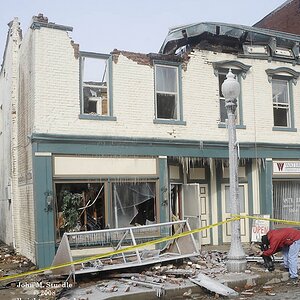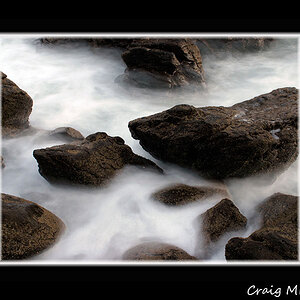mtorti
TPF Noob!
- Joined
- Jul 16, 2009
- Messages
- 5
- Reaction score
- 0
- Location
- ny, ny
- Can others edit my Photos
- Photos NOT OK to edit
My question isn't obscure in nature, but in practice I'm not so sure.
I am interested in knowing the process the image goes through when entering the lens of a HOLGA camera and onto the film. Does the image get flipped, like in conventional cameras, or is it simply transferred as is.
I did a test last night by opening the back of the camera and setting the shutter to bulb. With the shutter open I moved my finger in front of the lens. The image appeared as it is in reality, not flipped and not backwards. The leads me to believe that the negative receives the image with no transformation. Is this correct?
I have researched this question, and every site provides the flipping of the image within the camera. I remember from basic photo way back in the day, this process being taught as well. So is this because the lens of a HOLGA camera (cheaper and non-professional) treats the image differently?
I do experimental photography and this information is vital to my next project. I have a shoot this weekend and no time to do a test run. This will be the beginning of a shooting style I am about to focus on, but I'd like the first run to come out with the intended results. All I can say is how the image reacts within my HOLGA is vital to my work. I'll have an answer after this first roll, but I wanted to see if any photo geniuses have insight beforehand.
So will the image be flipped; flipped upside-down and backwards; transfer backwards; or simply transfer straight onto the negative? Remember this is for HOLGA only.
For imagery-friendly responses: If the subject wears the shirt TOAT, am I right to assume that by entering the camera and transferring onto the negative, the light-sensitive side of the negative will be burned with TAOT? Or does the entire image become flipped upside-down?
I am interested in knowing the process the image goes through when entering the lens of a HOLGA camera and onto the film. Does the image get flipped, like in conventional cameras, or is it simply transferred as is.
I did a test last night by opening the back of the camera and setting the shutter to bulb. With the shutter open I moved my finger in front of the lens. The image appeared as it is in reality, not flipped and not backwards. The leads me to believe that the negative receives the image with no transformation. Is this correct?
I have researched this question, and every site provides the flipping of the image within the camera. I remember from basic photo way back in the day, this process being taught as well. So is this because the lens of a HOLGA camera (cheaper and non-professional) treats the image differently?
I do experimental photography and this information is vital to my next project. I have a shoot this weekend and no time to do a test run. This will be the beginning of a shooting style I am about to focus on, but I'd like the first run to come out with the intended results. All I can say is how the image reacts within my HOLGA is vital to my work. I'll have an answer after this first roll, but I wanted to see if any photo geniuses have insight beforehand.
So will the image be flipped; flipped upside-down and backwards; transfer backwards; or simply transfer straight onto the negative? Remember this is for HOLGA only.
For imagery-friendly responses: If the subject wears the shirt TOAT, am I right to assume that by entering the camera and transferring onto the negative, the light-sensitive side of the negative will be burned with TAOT? Or does the entire image become flipped upside-down?


![[No title]](/data/xfmg/thumbnail/30/30888-e7fd3f6ad2e0d85268f086de6d796459.jpg?1619734499)

![[No title]](/data/xfmg/thumbnail/31/31033-d583468208439e9103b8a87a7eccb965.jpg?1619734580)
![[No title]](/data/xfmg/thumbnail/30/30890-45d8875af0c79f0f727d7d55132972b0.jpg?1619734501)
![[No title]](/data/xfmg/thumbnail/41/41935-851da2b46dc9cbb829c8c42b2aa84873.jpg?1619739947)
![[No title]](/data/xfmg/thumbnail/38/38262-10a9668da9a2b36a92cddde57caf87bc.jpg?1619738547)





